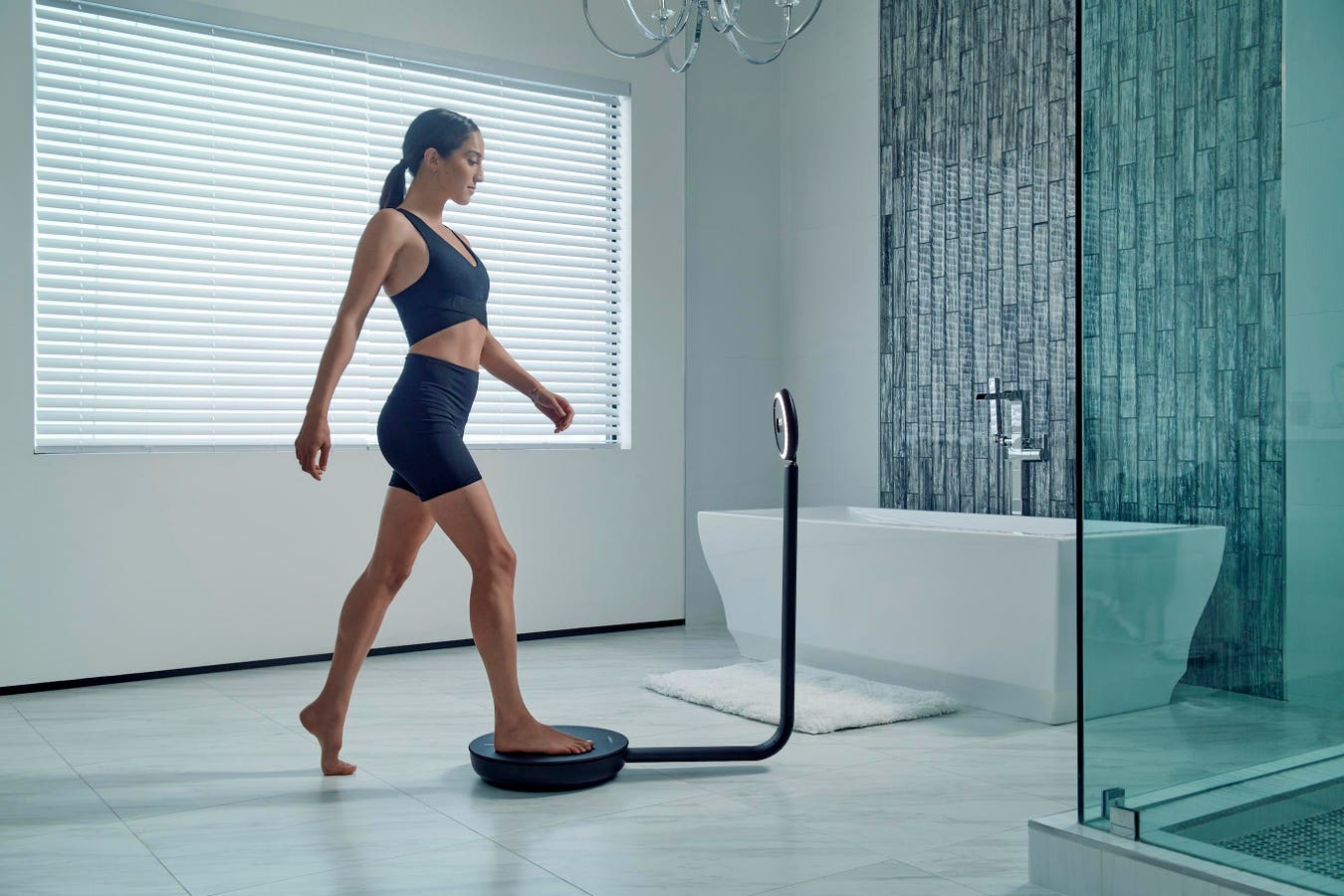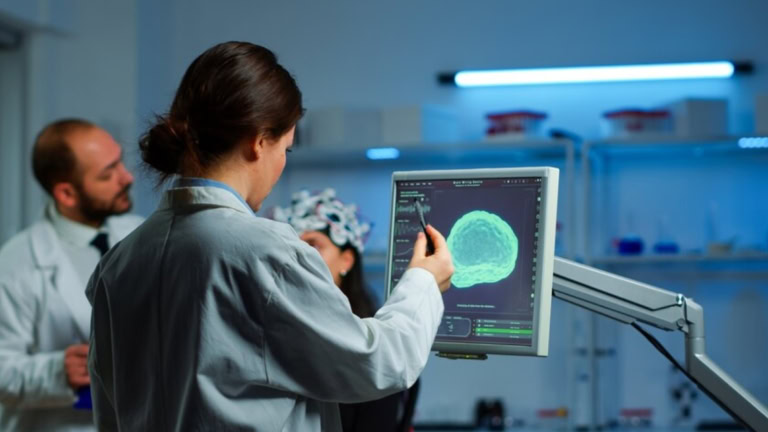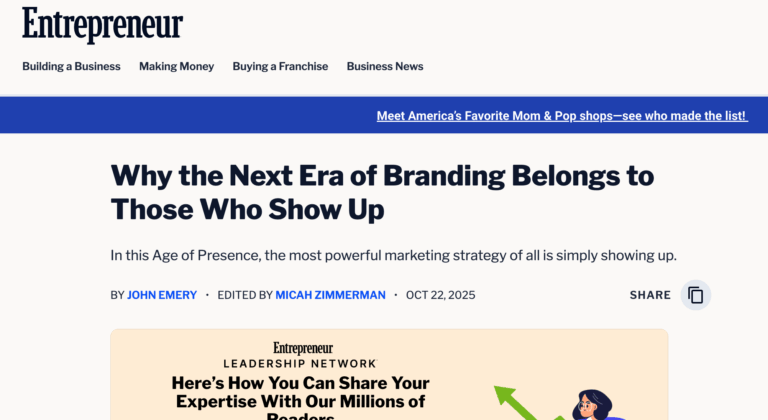As GLP-1 drugs like Ozempic boom, ShapeScale’s 3D body scanner claims DXA-level accuracy—revealing whether patients are truly losing fat or critical muscle.
Losing weight isn’t the problem. Losing muscle is. That’s the blind spot ShapeScale is betting on — and why doctors now call muscle the body’s most important organ of longevity.
Smart scales are everywhere — brands like Withings, Renpho, Fitbit, and Eufy promise a window into your health. Step on, and you’ll see weight, BMI, maybe even body fat percentage. But here’s the truth: most of those numbers are unreliable, sometimes off by 20% or more. Worse, they miss the only question that matters for healthspan: are you losing fat, or muscle? And in the age of GLP-1 muscle loss, that distinction is the difference between extending healthspan or accelerating frailty.
That blind spot has never been more dangerous. GLP-1 prescriptions like Ozempic and Wegovy have surged 587% in the last five years, reshaping bodies at unprecedented speed. Research shows up to 40% of the weight lost on these drugs comes from lean mass, not fat. Patients are getting lighter, but also weaker — trading fat for muscle in ways that accelerate frailty instead of extending longevity.
As Dr. Gabrielle Lyon argues, muscle is the “organ of longevity.” And longevity expert Dr. Peter Attia puts it bluntly: muscle isn’t vanity — it’s survival. Without it, there is no metabolic health, resilience, or independence.
ShapeScale, a San Francisco–based startup fresh out of beta, believes it can close that gap. Its AI-powered, medical-grade 3D body scanner replaces four tools at once — the before-and-after camera, the DEXA scan, the tape measure, and the so-called smart scale — with photorealistic 3D models, millimeter-level precision, and visual heatmaps that make hidden change visible.
A Founder’s Obsession With Precision
For Alexandre Wayenberg, ShapeScale began with a frustration many people know too well. While living in China, he indulged in carb-heavy cuisine and quickly gained weight. Determined to reverse course, he dieted and exercised — only for his connected scale to report he had gained four pounds. In reality, he had replaced fat with muscle.
The lesson turned urgent after an ACL surgery, when he realized his repaired leg wasn’t regaining muscle evenly with the healthy one. The imbalance, invisible to scales or even DXA scans, risked reinjury.
Family legacy deepened the conviction. Wayenberg’s father was a master tailor who dressed presidents and European royalty, instilling respect for precision in measurement. His eldest brother, a renowned pediatrician, died of cancer at a young age — a reminder that earlier detection can change outcomes.
Cofounder Martin Kessler brought his own urgency: once an obese adolescent, he understood firsthand the struggles of weight and body image. He teamed up with Wayenberg to turn ShapeScale from an idea into one of Y Combinator’s earliest hardware-backed startups.
The GLP-1 Blind Spot
The GLP-1 boom has been hailed as the biggest breakthrough in weight management since bariatric surgery. Employers are rushing to cover them, startups are pivoting business models, and investors are calling them the next statins.
But there’s a problem: GLP-1s don’t discriminate between fat and muscle. Clinical research shows up to 40% of weight lost comes from lean mass. That undermines strength, bone density, and metabolic health — all critical markers of longevity. Losing fat extends healthspan. Losing muscle shortens it. That’s the longevity equation ShapeScale is trying to rewrite.
Muscle: The Organ Of Longevity
It’s also the philosophy of Dr. Gabrielle Lyon, a board-certified physician and creator of Muscle-Centric Medicine®. Lyon calls muscle the “organ of longevity” — the single most important predictor of how well we age. Her work emphasizes that preserving muscle mass is essential not just for strength, but for preventing chronic disease, maintaining metabolic health, and extending healthspan.
Her perspective aligns with Attia, who puts it bluntly:
“If you want to be able to play with your grandkids, travel, or even just get up off the floor without help in your 80s and 90s, you need muscle. It’s not vanity — it’s survival.”
He also emphasizes the link between muscle and metabolism:
“Muscle is the most important driver of glucose disposal. Without it, you don’t have metabolic health.”
For many GLP-1 patients, this distinction is invisible. One patient added resistance training but saw no movement on the scale. To them, it looked like a plateau. ShapeScale’s heatmap revealed the truth — glowing blue where fat had disappeared and red where new muscle had been gained. What looked like stagnation was actually success.
For another patient, the opposite was true. The scale suggested progress, but ShapeScale showed blue where valuable muscle had been lost. That visual evidence prompted a clinical intervention focused on preserving strength, not just shedding pounds.
“What looked like a plateau was actually success. ShapeScale’s heatmap revealed fat lost and muscle gained that the scale had completely hidden.”
ShapeScale makes this philosophy visible. By rendering the body in 3D, down to the millimeter, it distinguishes fat from muscle and exposes imbalances. Early data shows that users on GLP-1s who tracked with ShapeScale preserved 20% more lean mass than average. Visibility itself became an intervention: when patients could see what they were losing, behavior and clinical guidance shifted.
Beyond The Scale: Why Numbers Mislead
Scales reduce the human body to a single, misleading number. Smart scales layered on body fat and water metrics, but accuracy swings wildly. Even DXA — the clinical gold standard — is costly, requires trained operators, and offers no visual record.
“Step on a scale, and you see a number. Step onto ShapeScale, and you see yourself, down to every contour, every shift in muscle or fat,” says cofounder Alexandre Wayenberg. “It’s the difference between looking at an odometer and looking through a windshield.”
ShapeScale produces lifelike 3D scans, before-and-after comparisons, and color-coded heatmaps that reveal how the body is changing, not just how much. Its health and body scores don’t just quantify progress; they turn it into guidance: which areas are lagging, which are improving, and whether interventions are paying off. Think of it as an MRI-lite for everyday health and longevity.
Proving Accuracy: How ShapeScale Stacks Up To DXA
A recent whitepaper compared ShapeScale to DXA, the gold standard for body composition.
- Dataset: 1,000 adults
- Accuracy: Mean absolute error of 1.86%, with R² of 0.90
- Smart scale comparison: Bioelectrical impedance analysis fared far worse (MAE 4.79%, R² 0.35)
- Practicality: Scans completed in under a minute, without radiation, producing photorealistic 3D outputs
Smart scales approximate. DXA informs. ShapeScale visualizes.
Beyond Weight Loss: Medical, Surgical, And Performance Impact
ShapeScale’s use cases stretch beyond weight loss into orthopedics, plastic surgery, and sports performance.
- Orthopedics: Post-ACL, hip, or shoulder surgery, patients often rebuild muscle unevenly. ShapeScale exposes asymmetries that can lead to compensatory strain and reinjury.
- Plastic surgery: Traditionally, patients rely on 2D photos. ShapeScale provides lifelike 3D models and heatmaps with millimeter precision, giving surgeons transparent records and patients clearer expectations.
- Athletics: Even small imbalances can be the difference between peak performance and injury. ShapeScale offers an early warning system.
“Patients finally understand what’s happening beneath the skin — and that changes behavior,” says Dr. Jake Deutsch, a ShapeScale advisory board member.
From YC To Insurers: Betting On Muscle As Longevity
ShapeScale was one of Y Combinator’s earliest hardware-backed bets, before the accelerator shifted heavily to software. The early validation from YC gave the company credibility in Silicon Valley. Additionally, ShapeScale was part of a startup accelerator launched by AIA, Asia’s largest life insurer. For a carrier managing millions of lives, the appeal was clear: if muscle is longevity’s most important organ, then visualizing it isn’t just wellness — it’s actuarial risk management.
That blend of Silicon Valley and insurance validation reflects ShapeScale’s positioning: not another fitness gadget, but a platform that could change how longevity itself is measured.
Smart Scales, Big Tech, And The Precision Gap
ShapeScale is entering a crowded market of so-called “smart” devices. Withings, Renpho, Fitbit, and Eufy dominate the consumer scale segment, selling millions of units at under $200. Apple looms largest: a single update to the iPhone or Apple Watch could introduce a “good enough” 3D body scan overnight, instantly commoditizing the space.
Other entrants — including Noom’s in-app body scan for GLP-1 users, FitXpress by 3DLook, and Sword Health’s digital programs — are also tackling body composition. But none claim the same level of millimeter precision, photorealistic imaging, or DXA-paired clinical validation that ShapeScale has built its moat around.
While Apple Watch, Whoop, and Oura monitor behavior and inputs, ShapeScale makes the outcomes visible on the body itself — closing the loop with a clarity and immediacy no metric can match. Wearables track the journey; shapeScale shows the destination.
Competitor Comparison: Body Composition Tools
While smartphone 3D scanning has been available for years, tracking meaningful change requires medical-grade accuracy. That dataset is ShapeScale’s edge: insurers, clinicians, and researchers care about precision, not gimmicks. In that sense, ShapeScale looks less like a gadget company and more like an infrastructure play.
The Insurance Multiplier For Longevity Tech
So far, most ShapeScale adoption has come through cash-pay clinics, med spas, and performance centers. But the bigger unlock will come if insurers and employers step in. Continuous glucose monitors and digital therapeutics went from niche gadgets to reimbursed tools once payers recognized their role in preventive care. ShapeScale could follow the same path.
Imagine if GLP-1 patients were required to track body composition to maintain coverage — or if employers bundled ShapeScale scans into wellness programs to ensure weight loss didn’t come at the expense of muscle. For insurers facing ballooning costs of frailty, fractures, and metabolic disease, visibility into muscle mass could be the cheapest intervention they ever make.
Beyond Numbers: A New Era Of Body Composition
No competitor owns this dataset at scale — and ShapeScale’s ability to collapse multiple categories into one device, from clinics to consumers, is its moat.
That shifts the narrative from vanity metrics to longevity infrastructure, where preserving muscle and balance matters more than chasing a number on a scale.
When Clinical Precision Meets Consumer Access
ShapeScale’s first wave of adoption has come through clinics and professionals. More than 500 commercial customers now use the device, including 120 GLP-1 clinics, med spas, gyms, orthopedic practices, and plastic surgery offices. Providers use it not just to monitor composition but to motivate patients with visible proof of progress.
But the consumer frontier is opening. In New York City, luxury fitness startup Elite has integrated ShapeScale into its in-home training program and Treat Medspa has added it to its offering for patients. It’s proof of the company’s dual strategy: B2B distribution through clinics and providers, as well as direct-to-consumer sales and leases.
Beyond the Pro version priced at roughly $10,000, ShapeScale is preparing to launch a consumer model at around $1,000 with a $10 monthly subscription. The goal: make 3D body visualization mainstream. That shifts the narrative from vanity metrics to longevity infrastructure, where preserving muscle and balance matters more than chasing a number on a scale.
ShapeScale is already generating $1.5M+ in annual recurring revenue, growing 20% month-over-month for 18 consecutive months — a 30x leap from about $50K to $1.5M in ARR. The company is now just two months from cash-flow positive, underscoring both strong traction and an unusually steep growth rate for hardware. On privacy, all data and scans are fully encrypted, accessible only to the practitioner and patient. Clinical credibility first, consumer accessibility next.
ShapeScale’s long-term vision is a body scanner in every home — a device that automatically tracks changes and recommends actions to live healthier, look better, and extend lifespan. As companies like Neko Health, Prenuvo, and Ezra/Function Health signal momentum in preventive scanning, the race to build this new layer of healthcare is accelerating. ShapeScale is positioning itself not as another piece of fitness tech, but as core longevity infrastructure at the forefront of the at-home revolution.
Building The MRI-Lite For Everyday Health And Longevity
The market has fixated on GLP-1s as miracle drugs. The contrarian view: the real opportunity isn’t in the drug, but in the infrastructure that ensures it doesn’t backfire.
Peloton showed how hardware can surge and then struggle when it’s seen as a lifestyle accessory rather than a necessity. Apple Watch, by contrast, thrives because it has become sticky, everyday infrastructure. ShapeScale wants to follow the Apple path, not Peloton’s. Its moat is its DXA-paired dataset, clinical validation, and provider adoption — advantages consumer electronics brands can’t replicate.
Still, skeptics argue that ShapeScale faces hurdles. The device costs nearly $10,000 upfront or $199 a month — a steep ask for clinics, let alone consumers. Adoption could stall if patients aren’t willing to engage with another piece of health tech, or if insurers don’t recognize its value. And Apple’s scale advantage means a single product update could shift expectations overnight. As one industry analyst put it: “Patients don’t want another mirror — they want results. The question is whether visibility alone is enough.”
The bet is that GLP-1s will create not just a new drug category but a new class of body infrastructure. In that world, ShapeScale looks less like a gadget and more like an MRI-lite for everyday longevity.
From Vanity Metrics To Longevity Infrastructure
The bathroom scale told the story of weight in the 20th century. In the 21st century, weight is the wrong metric. GLP-1s are reshaping bodies in ways numbers can’t capture. Orthopedic and plastic surgery patients are rebuilding unevenly without realizing it. Athletes are one misalignment away from injury.
ShapeScale’s bet is that visibility, not numbers, is the new measure of health. With lifelike scans, DXA-level accuracy, and a dataset no competitor has, it is positioning itself as longevity infrastructure.
If it succeeds, health won’t be defined by pounds lost but by muscle preserved, imbalances corrected, and transformations made visible. As Gabrielle Lyon and Peter Attia remind us, muscle isn’t vanity — it’s survival. It is the body’s most important organ of longevity. And in a world reshaped by GLP-1 muscle loss, preserving that organ may prove the most important longevity intervention of all.
In the end, ShapeScale reframes health from vanity metrics to longevity infrastructure — where preserving muscle and balance matters more than chasing a number on a scale.
What you can’t see can hurt you. What you can see, you can change — and what you change, you can preserve for longer.















